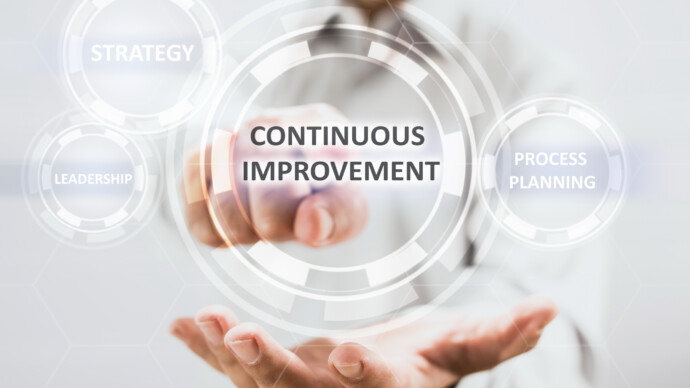Publication
CIP for sustainable corporate success

Those who want to succeed in today’s market conditions are obliged to innovate. At the same time, a company’s performance and product quality must be constantly improved. The increasingly wide variety – as found for example in the automotive industry – and the shortening of product life cycles, however, make this more difficult. As a rule, innovation is linked with a high level of investment and a performance that can scarcely be realised in the time given. Set against this is the Continuous Improvement Process (CIP). This uses small improvements to optimise the functionality and/or the quality of a product, and also helps to manage increasing complexity.
Innovations and CIP can be combined
The following graph illustrates that innovations and continuous improvement are not mutually exclusive. They are two approaches which in combination ensure maximum success for the company in question and the customers.

Among other things, the focus of CIP lies on the simplification of processes, increasing safety, and the improvement of product and process quality. One characteristic feature of the relevant processes is the flow in the form of a control cycle as described, for example, in the PDCA cycle (Plan-Do-Check-Act).
Possibilities for implementation
In this respect, one tool that is applied in almost all manufacturing companies is FMEA (Failure Mode and Effects Analysis). With the help of this tool it is possible to already uncover and evaluate product risks, and their impacts on the customers, during product development. In doing so, the issues identified can ensure not only a special product but also improvement across the company. However, contrary to the intentions of CIP, these findings are often not used for company-wide approaches to improvement. There are various potential reasons for this. To name a few examples, in addition to an additional time-based or financial effort and a lack of expertise in the implementation, a lack of support from management is mentioned.
Lessons Learned
So-called lessons learned can also constitute a further contribution to CIP. This term describes a retrospective look back at a project (or a product or process) in order to learn from shortcomings or new insights for future projects. Improvements found as part of this approach, however, get lost at the back of a drawer or are only used to a limited extent for future projects or activities running in parallel. Besides the two examples given, the list of things that can make a contribution as part of a CIP can be made as long as you like.
Why does CIP work? And why not?
Several factors come into play when it comes to whether CIP contributes to increasing the success of a company. As well as the correct composition, a methodically correct utilisation is a key factor. How deeply this process is ingrained in the thoughts and actions of a company’s staff also plays a crucial role. The question arises: is the CIP being carried out due to norms and regulations, or because it is an integral component of the company philosophy. The latter should be the goal of every company in order to be successful in the long run. Do you have any questions on the topic of quality management in general? Could you be in need of support in implementing selected tools, among other things in relation to CIP and the introduction of lessons-learned processes? Please get in touch.








